For all, it was
surely a once-in-a-lifetime chance to view the planet Venus as it made
its transit past the sun these past two days within view of millions of
people on Earth. The last Venus transit was in 2004, and the next pair
of events will not happen again until the years 2117 and 2125. Lloyd Young (23 photos total)

In
this composite image provided by NASA, the SDO satellite captures the
path sequence of the transit of Venus across the face of the sun at on
June 5-6 as seen from space. The last transit was in 2004 and the next
pair of events will not happen again until the year 2117 and 2125. (NASA
via Getty Images)

A
girl reacts as she uses a pair of eclipse glasses to watch Venus
passing the sun in Kolkata, India on June 6. The planet Venus made a
slow transit across the face of the sun on Tuesday, the last such
passing that will be visible from Earth for 105 years. (Rupak De
Chowdhuri/Reuters)

A
plane flies under a thin layer cloud crossing the sun as Venus moves
past the sun are seen through a coelostat at the Griffith Observatory in
Los Angeles on June 5. (Gene Blevins/Reuters)

Professor
Hashim Ahmed Yousif al-Sayed, dean of the College of Science at the
University of Bahrain, points out the planet Venus passing the sun as
seen through a telescope projected on paper to a small group of
spectators gathered, not pictured, at the campus of a university in
Sakhir, Bahrain on June 6. People around the world turned their
attention to the daytime sky on Tuesday and early Wednesday in Asia to
make sure they caught the rare sight of the transit of Venus. (Hasan
Jamali/Associated Press)

A
visitor photographs a live image of Venus moving past the sun showing
through a coelostat at the Griffith Observatory in Los Angeles on June
5. (Jae C. Hong/Associated Press)
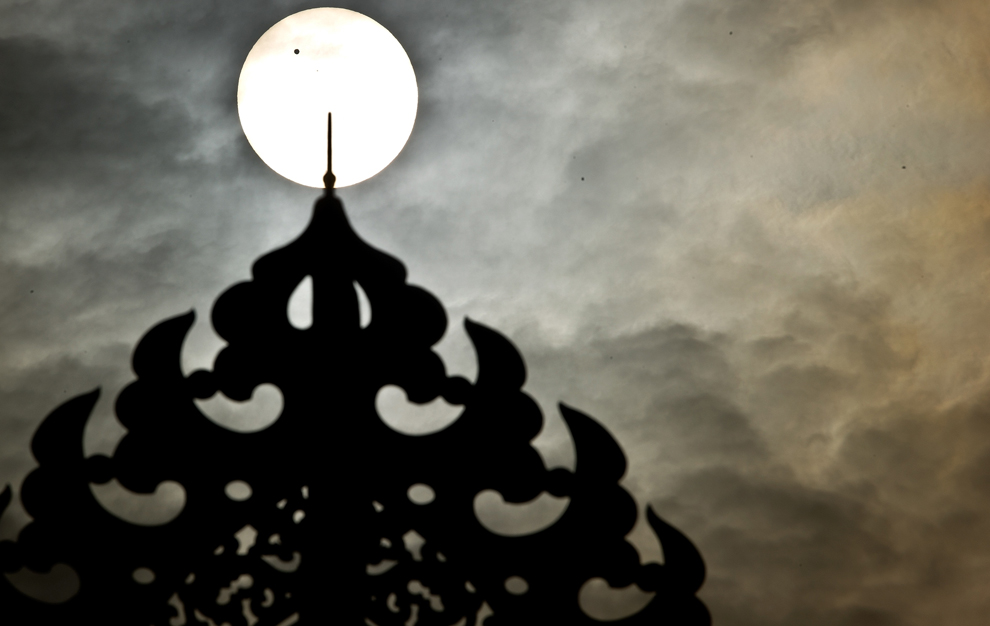
Planet
Venus, pictured as a black dot, is seen in transit across the Sun in
New Delhi, India on June 6. Sky-gazers around the world held up their
telescopes and viewing glasses to watch a once-in-a-lifetime event as
Venus slid across the sun. (Manan Vatsyayana/AFP/Getty Images)
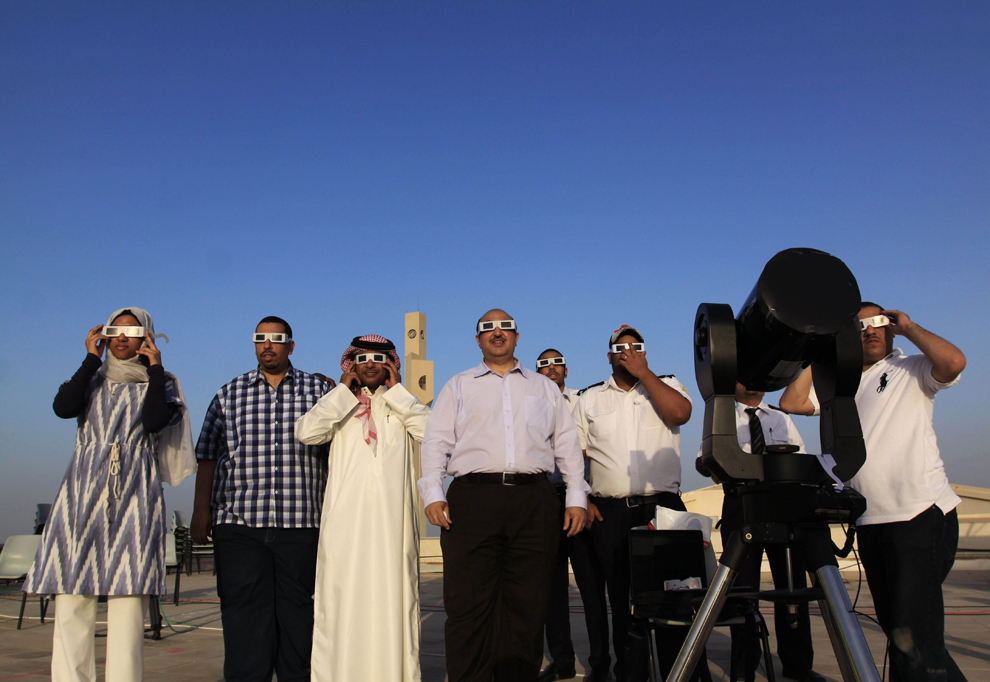
Astronomer
and Vice President for Planning and Development of Bahrain University,
Waheeb Essa al-Naser, (fourth left) watches the planet Venus pass the
sun, with a small group of spectators at the university in Sakhir,
Bahrain on June 6. (Hasan Jamali/Associated Press)

Indians
watch the projection of the transit of Venus against the Sun in New
Delhi, India on June 6. People around the world turned their attention
to the daytime sky on Tuesday and early Wednesday in Asia to make sure
they caught the rare sight of the transit of Venus. (Manish
Swarup/Associated Press)

Planet
Venus, pictured as a black dot, is seen in transit across the Sun at
sunrise in Kathmandu on June 6. Sky-gazers around the world held up
their telescopes and viewing glasses to watch a once-in-a-lifetime event
as Venus slid across the sun. (Prakash Mathhema/AFP/Getty Images)
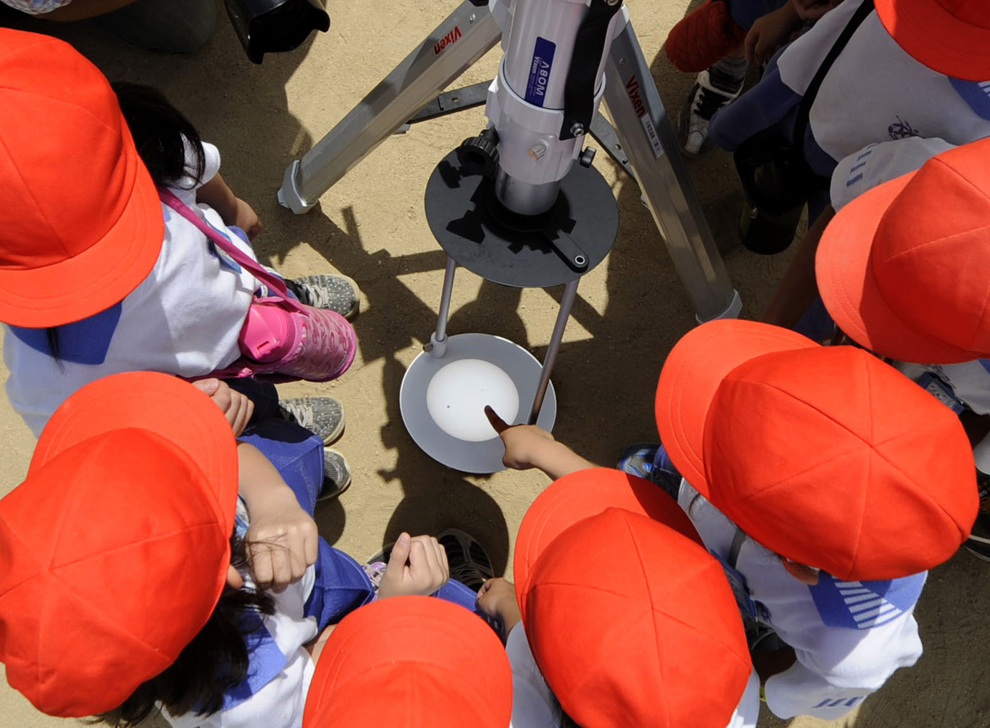
Elementary
school students gather to watch the projection of Venus crossing the
sun in Kobe, western Japan on June 6. From the U.S. to South Korea,
people around the world turned their attention to the daytime sky on
Tuesday and early Wednesday in Asia to make sure they caught the rare
sight of the transit of Venus. The next one won't be for another 105
years. (Kyodo News via Associated Press)

Venus
moves across the sun during the transit in Sydney, Australia on June 6.
People around the world turned their attention to the daytime sky on
Tuesday and early Wednesday in Asia to make sure they caught the rare
sight of the transit of Venus. (Rob Griffith/Associated Press)
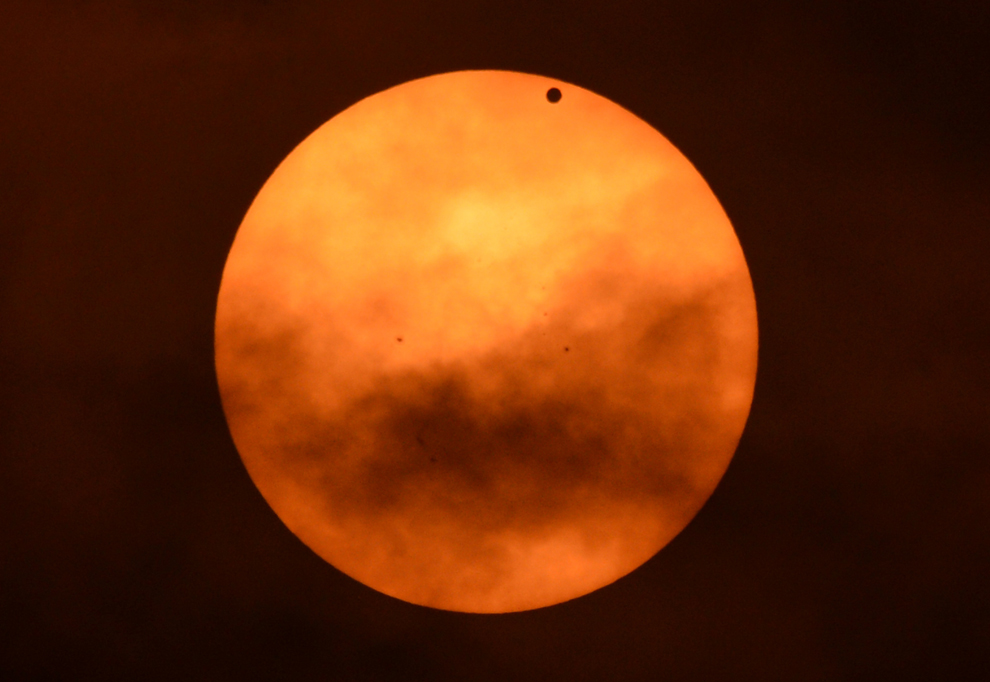
Venus
begins to cross the sun's face during the transit of Venus on June 5 as
seen from the west side of Manhattan in New York. Astronomers around
the world are training their telescopes on the skies to watch Venus pass
in front of the sun, a once-in-a-lifetime event that will not be seen
for another 105 years. (Stan Hond/AFP/Getty Images)

South
Korean primary school students wearing masks with solar viewers watch
Venus passing between the sun and the Earth at the Gwacheon National
Science Museum in Gwacheon, south of Seoul on June 6. (Kim
Hong-Ji/Reuters)
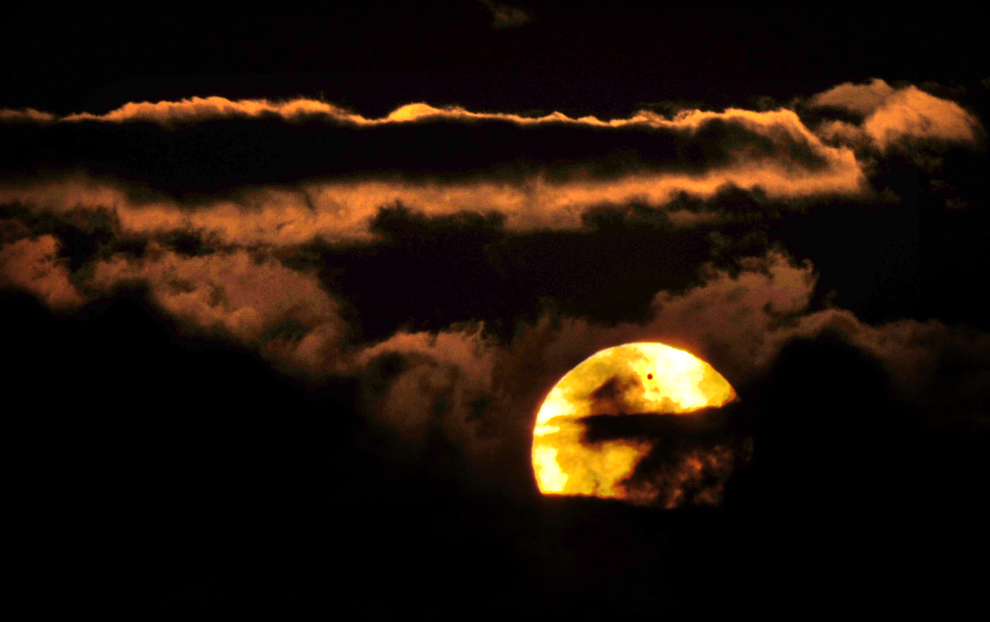
The
planet Venus is seen in transit across the Sun during sunrise in
Sofia, Bulgaria on June 6. (Nikolay Doychinov/AFP/Getty Images)

A
bird sits atop one of the domes of the landmark Taj Mahal as Venus
begins to pass in front of the sun, as visible from Agra, India on June
6. People around the world turned their attention to the daytime sky on
Tuesday and early Wednesday in Asia to make sure they caught the rare
sight of the transit of Venus. (Kevin Frayer/Associated Press)
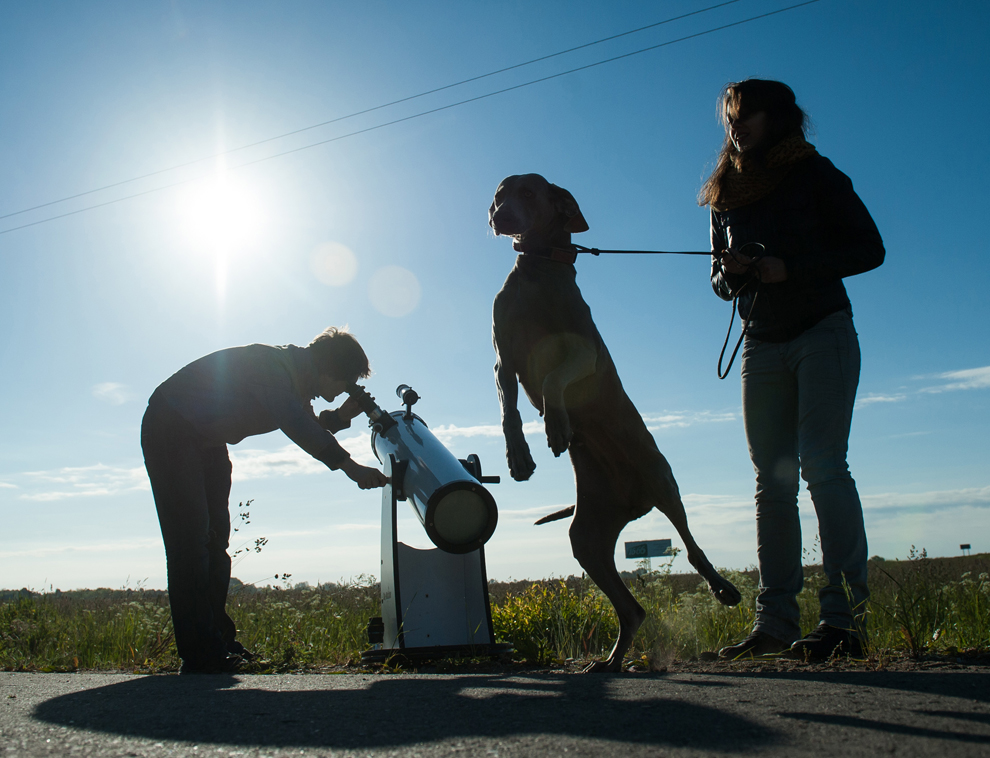
A
man looks through a telescope (left) early on June 6 to see the
transit of Venus across the Sun in the countryside outside the Belarus
capital Minsk. Sky-gazers around the world held up today their
telescopes and viewing glasses to watch Venus slide across the sun.
(AFP/Getty Images)
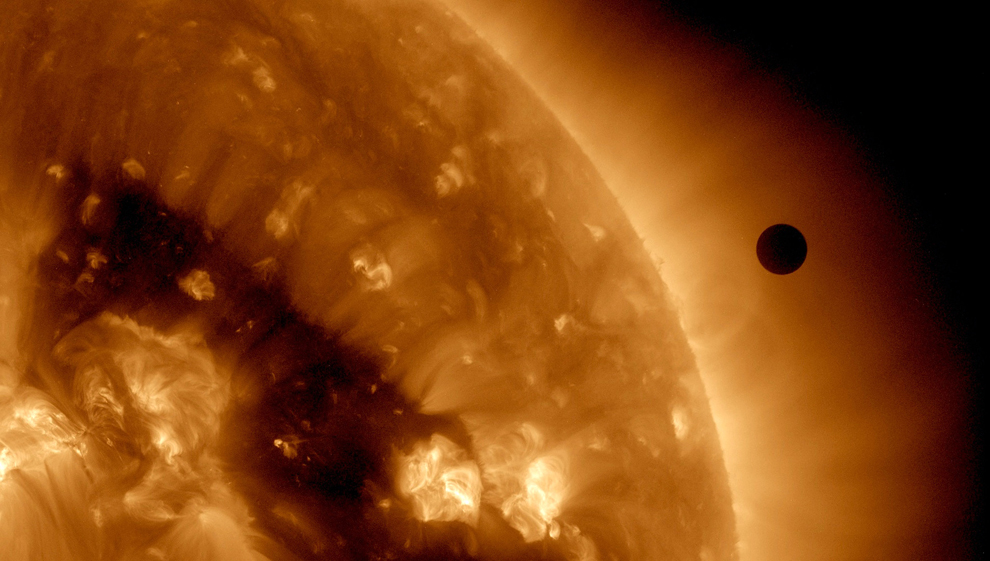
An
image provided by NASA, the SDO satellite captures a ultra-high
definition image of the Transit of Venus across the face of the sun on
June 6 from space. The last transit was in 2004 and the next pair of
events will not happen again until the year 2117 and 2125. (NASA)
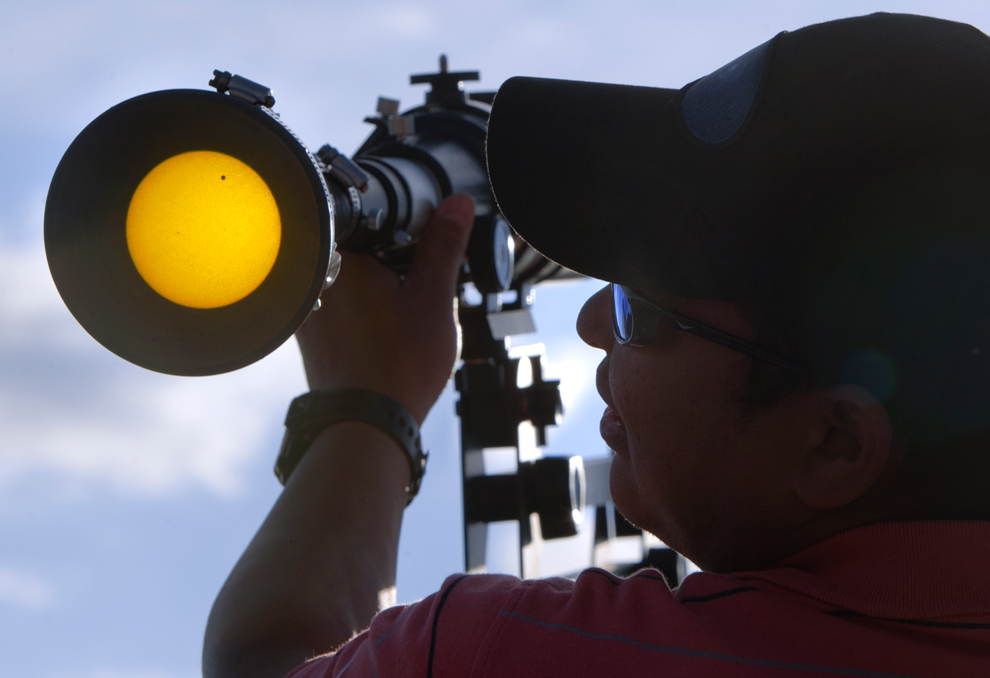
Jose
Borrero, of Grand Rapids, adjusts his telescope to watch the transit of
Venus from the top of the Grand Rapids Public Museum parking garage on
June 5 in Grand Rapids, Mich. "It's a cool event," he said. Borrero is a
member of the Grand Rapids Amateur Astronomical Association. (Cory
Morse/The Grand Rapids Press va Associated Press)
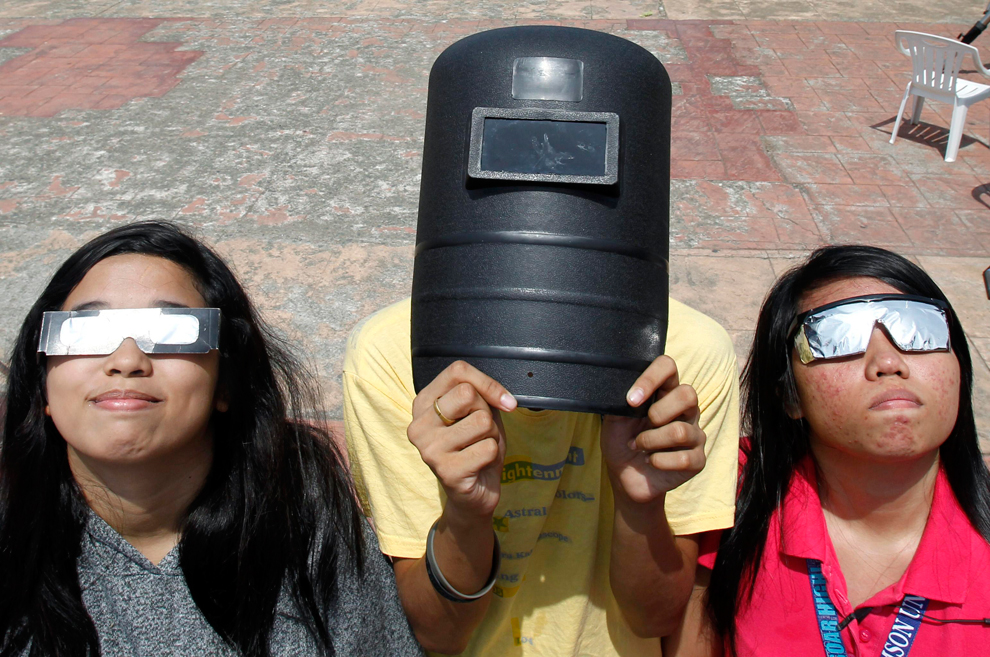
Students
use a welding mask and eclipse glasses to watch Venus passing between
the Sun and the Earth in Luneta park in Manila, Philippines on June 6.
(Romeo Ranoco/Reuters)

Venus
is silhouetted as it crosses in front of the sun as it sets behind the
Kansas City, Mo. skyline on June 5. From the U.S. to South Korea, people
around the world turned their attention to the daytime sky on Tuesday
and early Wednesday in Asia to make sure they caught the
once-in-a-lifetime sight of the transit of Venus, which won't be seen
for another 105 years. (Charlie Riedel/Assocaited Press)
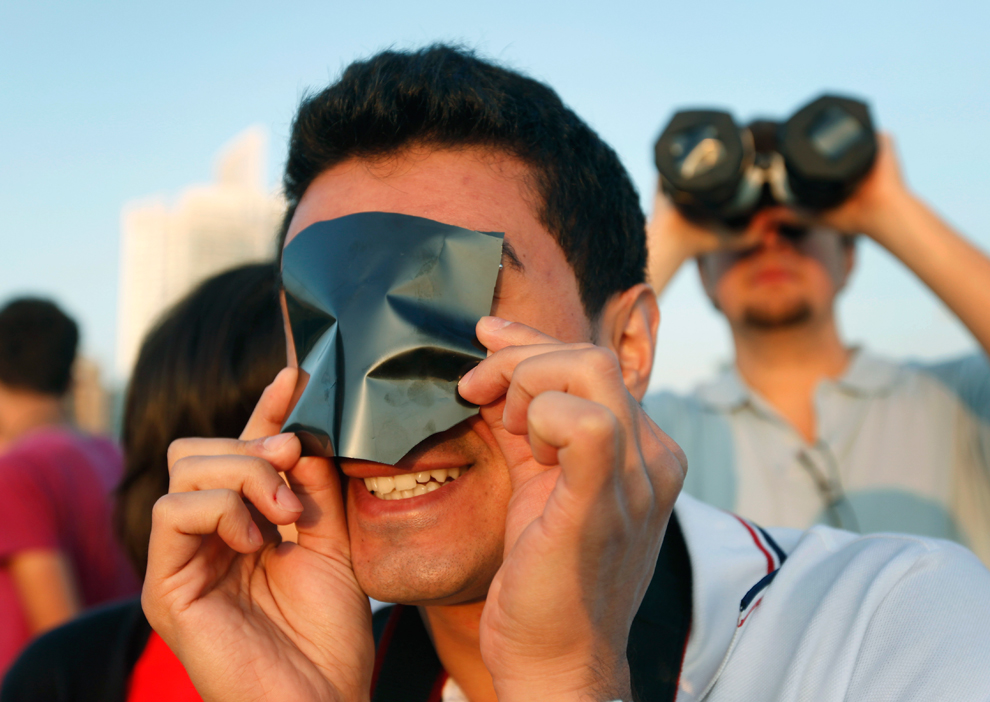
A
Lebanese man looks through a protective viewing filter sheet as he
watches the transit of the planet Venus moving across the sun, in
Beirut, Lebanon on June 6. (Hussein Malla/Associated Press)
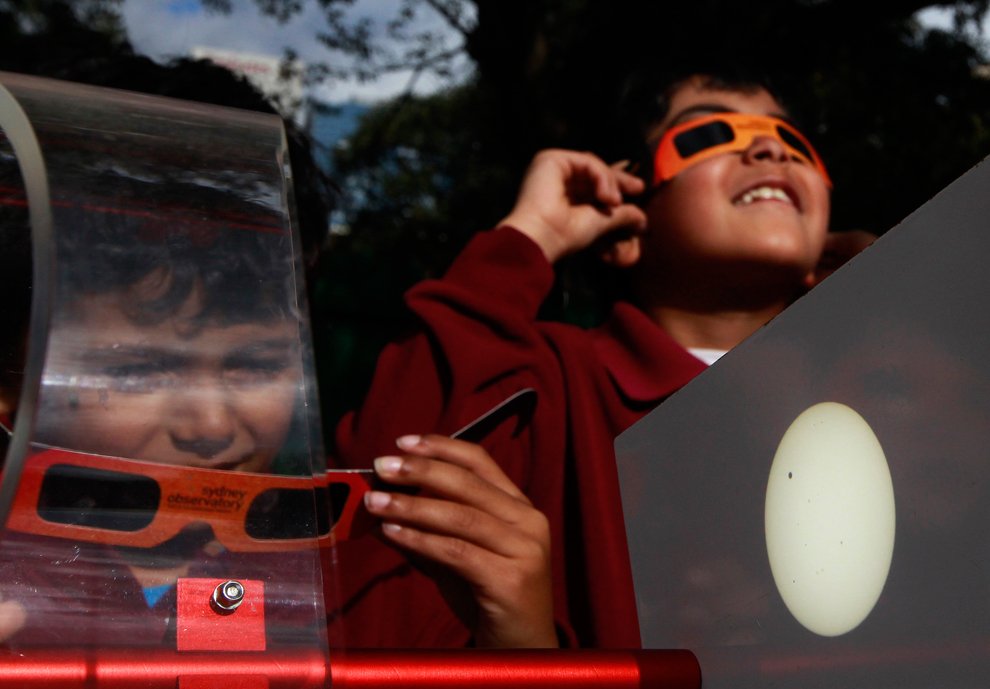
Schoolchildren look at the planet Venus transiting across the sun at Sydney's Observatory on June 6. (Daniel Munoz/Reuters)
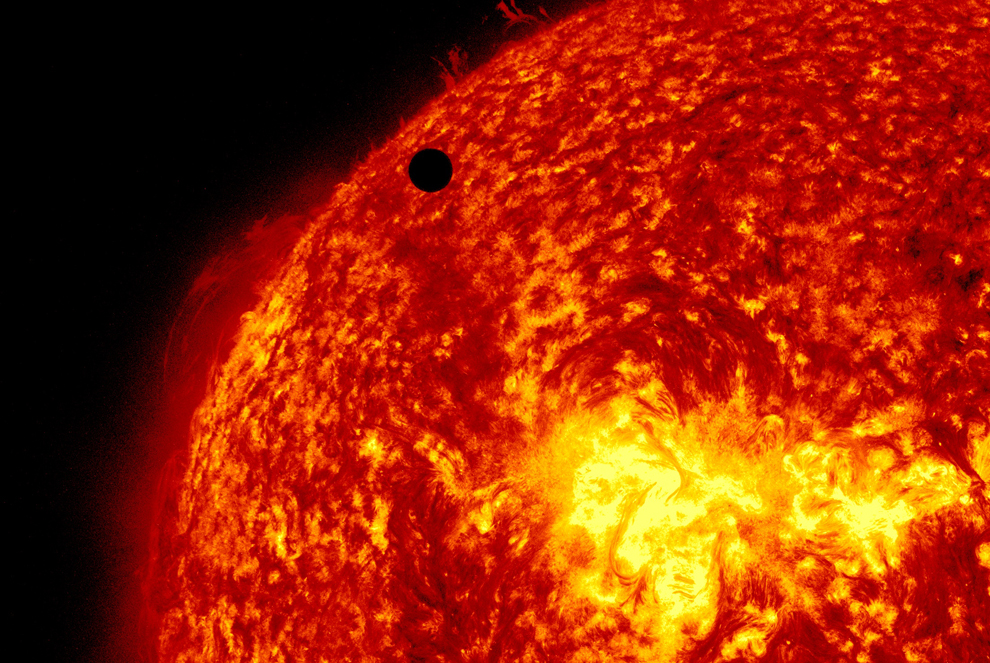
An
image provided by NASA, the SDO satellite captures a ultra-high
definition image of the Transit of Venus across the face of the sun at
on June 5 from space. The last transit was in 2004 and the next pair of
events will not happen again until the year 2117 and 2125. (NASA)























No comments:
Post a Comment